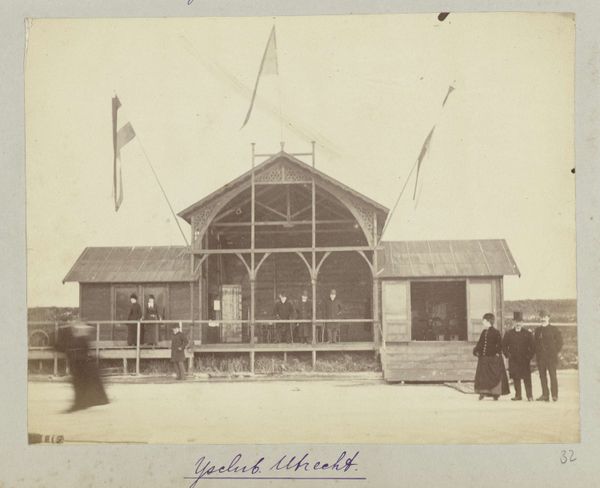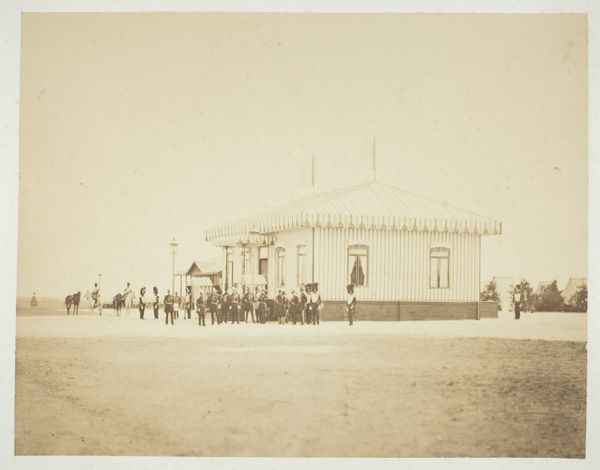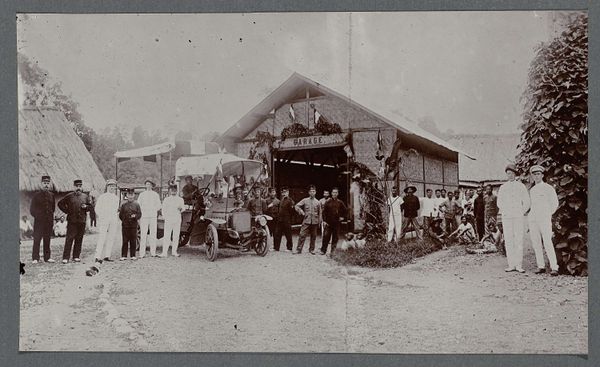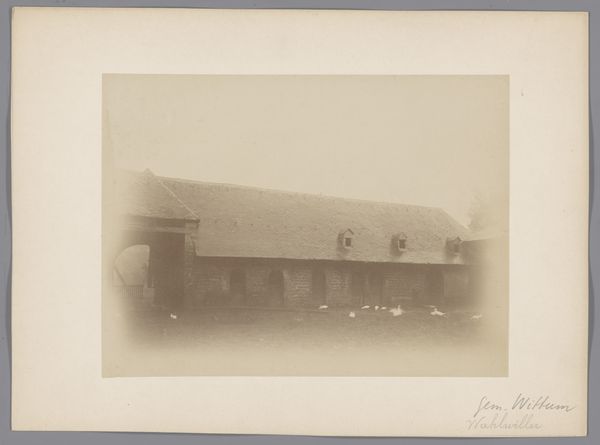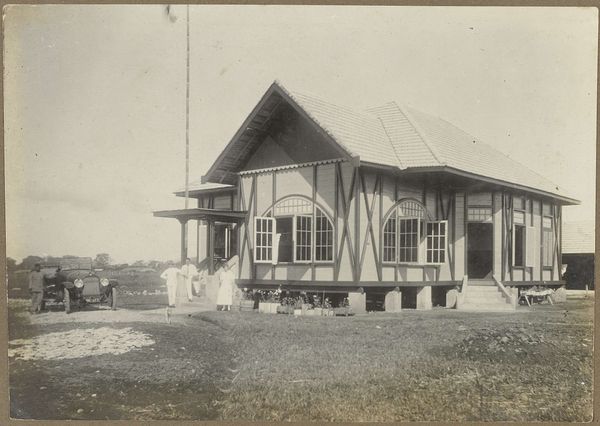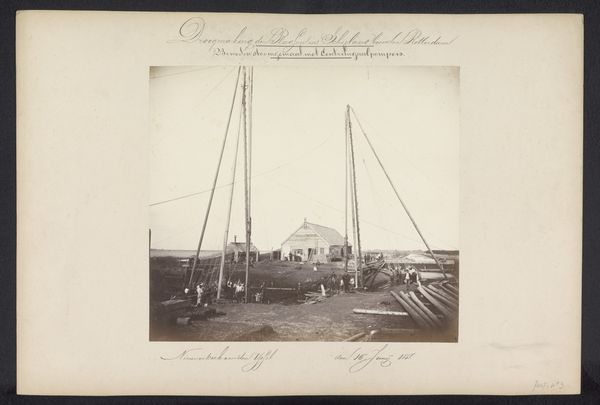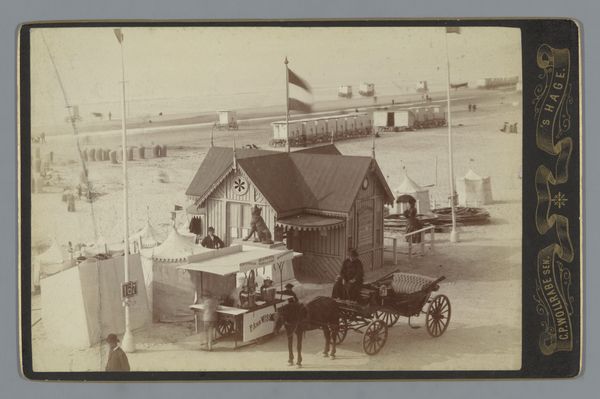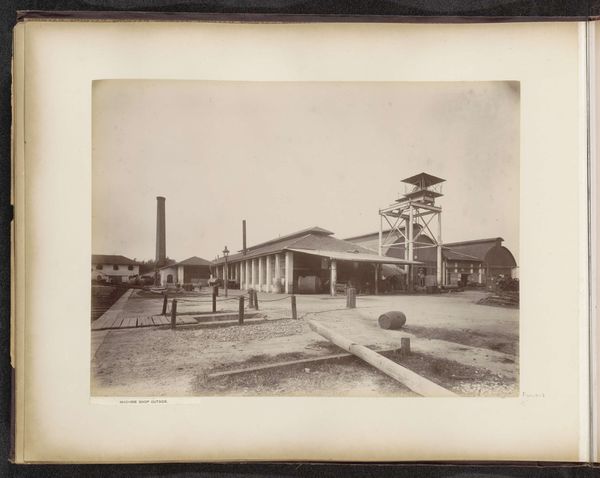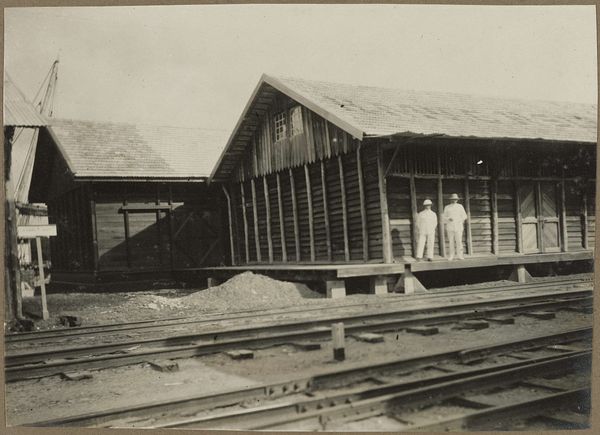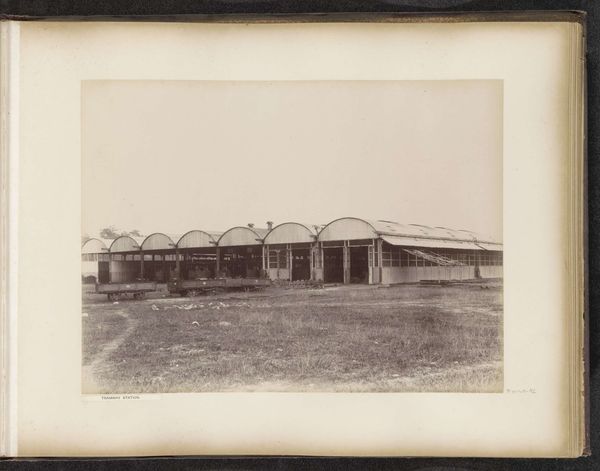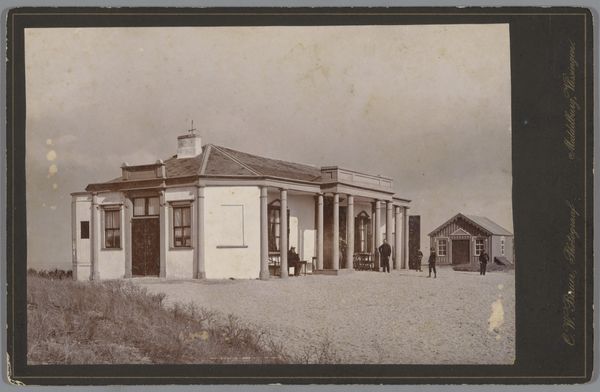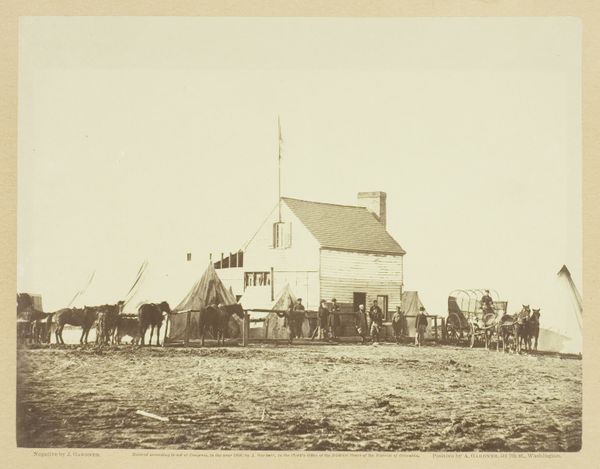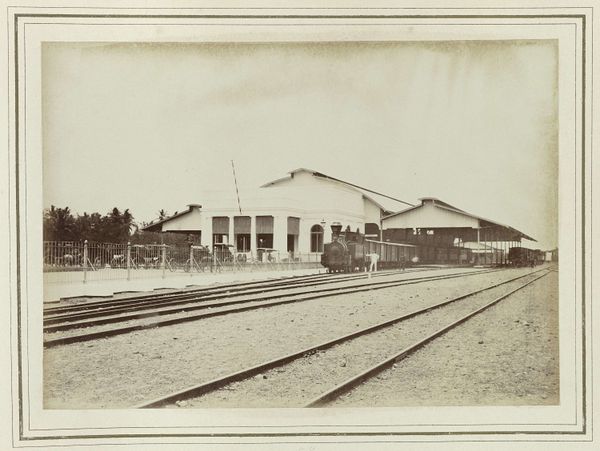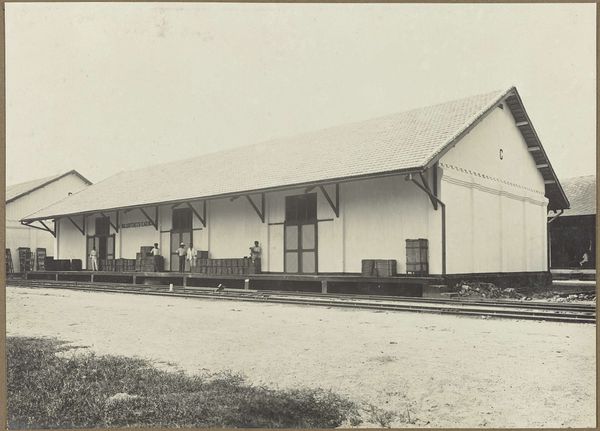
photography, architecture
#
landscape
#
photography
#
architecture
#
realism
Dimensions: height 172 mm, width 122 mm, height 302 mm, width 250 mm
Copyright: Rijks Museum: Open Domain
Curator: Let's discuss this fascinating photograph titled "Clubgebouw van IJsclub Utrecht," or "Clubhouse of the Utrecht Ice Club," taken in 1888. It now resides in the Rijksmuseum collection. Editor: My immediate reaction is of stark geometry against the softness of the probable snowy or icy landscape. The contrast between the rigid architecture and what I perceive as the ephemeral winter environment is quite striking. The subdued, almost monochromatic tones add to a sense of isolation. Curator: The photograph offers an interesting glimpse into the social life of late 19th-century Utrecht. Ice skating was not just a pastime but a communal activity, fostering social bonds reinforced by structures like this clubhouse. Consider its purpose: providing warmth, shelter, and a space for camaraderie in a time of limited leisure options for certain social classes. Editor: I’m drawn to the rhythmic repetition of vertical and arched structural supports in the clubhouse design itself, juxtaposed with the horizontal emphasis of the building's base. It's almost a study in opposing lines. And what of those flags atop the clubhouse? They feel deliberately placed to draw the eye upward. Curator: Precisely. The flags serve not just as decoration but potentially signal club identity and prestige. Such organizations represented bourgeois ideals of association and civic engagement. Looking closely, you'll see that the men assembled represent an organized community which embraced its members. This photograph documented a social custom intended for inclusion, but in reality it excluded individuals outside of that certain demographic. Editor: Semiotically, that choice of subdued palette emphasizes a focus on form and texture. The interplay of light and shadow accentuates the three-dimensional quality of the building. It's less about visual pleasure and more about architectural precision and intent. This visual information would offer valuable context when comparing this to paintings and drawings. Curator: Agreed, and we can interpret the choice of photography itself as more than mere representation. It's the ideal medium to capture a 'realistic' snapshot, and in this time, it might suggest notions of progress, or a factual approach to documenting aspects of contemporary life for middle class society. Editor: Ultimately, I see a compelling study of form and its relationship to its immediate surroundings—architecture captured in time and transformed by an achromatic lens into enduring structural form. Curator: Yes, and understanding its place within the burgeoning social and cultural context gives depth to its significance, providing us with a lens into the priorities and pursuits of that specific Dutch community at the close of the 19th century.
Comments
No comments
Be the first to comment and join the conversation on the ultimate creative platform.
